Write your brilliant content
Category: Uncategorized
-

Exploring the Ocean’s Final Frontier: How Kids Are Building Robots for the Twilight Zone
Real-World Science in Action—And in the Classroom
“We know more about the surface of Mars than we do about the depths of our own oceans.” Oceanographers repeat this often, and for good reason. The Ocean Twilight Zone (OTZ)—a vast, dimly lit layer between 200 and 1000 meters deep—remains one of the least understood parts of our planet. It plays a key role in marine life, climate regulation, and carbon storage. But studying a place so remote and inhospitable is no small challenge.
That’s where robotics comes in. Thanks to Scoutlier’s OTZ Project-Based Learning Program, students aren’t just learning about ocean exploration—they’re building the tools to do it themselves, engaging in hands-on, inquiry-driven experiences that mirror the real-world challenges scientists face.
Yogesh Girdhar, a scientist at Woods Hole Oceanographic Institution, puts it simply: “If you’re succeeding all the time, that means you’re not really doing anything interesting.” His work with robotics and AI is focused on making exploration in the Twilight Zone not just possible, but more effective. That same philosophy—pushing boundaries and embracing discovery—is now being passed down to the next generation through project-based learning.
“The OTZ is home to species that migrate vertically every night in the largest movement of biomass on Earth,” says Girdhar. “It also serves as a major carbon sink, pulling carbon from the atmosphere and trapping it in the deep sea. But because it’s so difficult to access, scientists rely on technology—especially autonomous robotics—to gather data and uncover its secrets.”
Traditional deep-sea exploration depends on expensive, remotely operated vehicles. But autonomous robots with AI-driven decision-making allow for new kinds of discovery. Instead of following a rigid script, they react to their surroundings, adjusting their movements and objectives based on what they encounter. They are, in a sense, learning about the ocean as they explore it.
Scoutlier’s Ocean Twilight Zone Project-Based Learning Program brings this technology to students. Through hands-on projects, young explorers:
- Design and build their own underwater robots.
- Program adaptive AI that allows their robots to explore and respond to new data.
- Analyze real-world findings just like marine scientists.
- Collaborate on STEM challenges that mirror the work of professional oceanographers.
This isn’t a classroom experiment—it’s a model of project-based learning that prepares students to engage with real-world scientific inquiry. The OTZ program is an excellent fit for K-12 schools looking to integrate STEM into their curriculum, whether as part of a science class, an enrichment program, or a summer camp. It equips students with practical problem-solving skills and leadership opportunities, helping them develop confidence in tackling complex challenges.
By combining robotics, AI, and ocean science, Scoutlier’s program helps students move beyond textbooks and into active exploration. They don’t just study oceanography; they contribute to it. The discoveries of tomorrow might come from students experimenting today.
The Ocean Twilight Zone remains one of Earth’s last frontiers. With the right tools and the right minds, we can bring its mysteries to light. Whether you’re an educator, a student, or just someone fascinated by the deep sea, now is the time to be part of the next wave of discovery.
Learn more about the OTZ program and how your students can participate here!
Scoutlier, in partnership with ONR and Woods Hole Oceanographic Institution, makes it possible to run programs like OTZ at scale, ensuring that students and educators have access to the tools and guidance they need. By providing a structured, easy-to-use platform, Scoutlier helps teachers integrate real-world projects into their curriculum without being overwhelmed by logistics. Data collection, collaboration, and progress tracking are built into the platform, making it easier for students to focus on discovery and innovation. With Scoutlier, schools can bring high-level STEM experiences to more students, equipping them with the skills and confidence to tackle complex challenges beyond the classroom. The program also supports K-12 educators and school leaders in fostering student engagement, teamwork, and leadership—critical skills for the next generation of scientists and engineers.
-

Breaking Down Barriers: Why AAC Access is Critical for Educational Equity
Communication is more than just words—it’s the foundation of human connection, learning, and self-expression. For many K-12 students with communication disabilities, Augmentative and Alternative Communication (AAC) devices and software represent the difference between silence and having a voice, between isolation and inclusion, between academic struggle and success.
Yet across our educational system, a troubling disparity exists. While some students have access to the AAC tools they need to thrive, countless others remain voiceless in their classrooms, unable to fully participate in the learning experiences that are their fundamental right.
The Academic Impact: More Than Just Grades
When students lack access to appropriate AAC devices and software, the consequences extend far beyond test scores. These essential tools serve as gateways to classroom participation, allowing students to engage with educational content, express their understanding, and demonstrate their literacy skills. Without them, students face barriers that can seem insurmountable.
The ripple effects are profound. Students who cannot communicate effectively in academic settings often experience long-term underachievement, not because they lack ability or potential, but because they lack the tools to express what they know. This educational disadvantage follows them throughout their academic journey, limiting future opportunities and closing doors that should remain open.
The Human Cost: Social and Emotional Well-being
Beyond academics lies an even more concerning impact on social and emotional development. Students denied effective communication tools frequently experience social isolation, mounting frustration, and diminished self-esteem. These challenges create a devastating cycle where disengagement from school compounds academic difficulties, leading to further isolation and diminished confidence.
When we fail to provide AAC access, we’re not just limiting academic potential—we’re affecting the fundamental human need for connection and self-expression that shapes a young person’s entire sense of self and place in the world.
The time for action is now. Every day that passes without addressing AAC access disparities represents lost opportunities for students who simply need the right tools to unlock their potential.A Foundation Built on Core Values
Addressing this disparity isn’t just an educational imperative—it’s a reflection of our deepest values as educators and community members:
Respect means creating learning environments where every student’s communication needs are acknowledged and supported, fostering appreciation for the diverse ways people express themselves.
Collaboration requires building partnerships between educators, families, speech-language pathologists, and technology specialists to ensure comprehensive AAC support.
High Expectations means refusing to lower our academic standards for students with communication disabilities, instead providing them with the tools they need to meet rigorous benchmarks.
Responsibility involves empowering students to become independent communicators and learners, taking ownership of their educational journey.
Equity demands that we provide all students with access to curriculum through quality instruction and appropriate communication tools.
Empowerment means building communities where every student can contribute their unique voice and perspective.
Transforming Education Through Inclusive Design
Investing in AAC accessibility creates a transformative ripple effect throughout our educational system. When we ensure that all students can communicate effectively, we enhance curriculum accessibility for everyone. Universal design principles benefit not just students with disabilities, but create more engaging and inclusive learning experiences for all learners.
This investment also supports teachers in developing new instructional design practices, building their capacity to create truly inclusive classrooms where every student can participate fully. The professional growth and collaboration that emerge from this work strengthens our entire educational community.
Economic and Social Returns on Investment
This isn’t just about meeting immediate educational needs—it’s about investing in our community’s future. Students who can communicate effectively are more likely to graduate, pursue higher education, and contribute meaningfully to our workforce and economy. The long-term economic benefits of ensuring AAC access far exceed the initial investment costs.
Moreover, this is fundamentally an issue of social equity and justice. When we provide all students with the communication tools they need, we take a crucial step toward creating a more inclusive society where everyone can participate fully in community life.
The Path Forward
The time for action is now. Every day that passes without addressing AAC access disparities represents lost opportunities for students who simply need the right tools to unlock their potential. These students have voices waiting to be heard, ideas ready to be shared, and contributions that can enrich our entire educational community.
Creating equitable access to AAC devices and software isn’t just the right thing to do—it’s an investment in a future where communication barriers no longer determine educational outcomes, where every student has the opportunity to learn, grow, and thrive.
The question isn’t whether we can afford to make this investment. The question is whether we can afford not to. Our students—and our future—depend on the answer.
Kim Zajac, is a certified SLP and Audiologist in Massachusetts. She is an ASCD/ISTE Community Leader, Educator Mentor for the Vital Prize Challenge, an Adobe Creative Educator Leader and Magic School Ambassador. Kim has served as a virtual practicum instructor at Speech@Emerson and is Co-Founder of EdCampSoutheasternMA. She is an FETC Featured Speaker and has presented at ASU GSV AIRShow, SXSWEDU, ISTE, MassCUE, & NYC Schools Tech Summit. Kim specializes in creating programs and sharing learning strategies to support students with diverse learning needs. She is passionate about establishing equitable access and inclusion for ALL students. You can connect with Kim at KimZajac.com
-
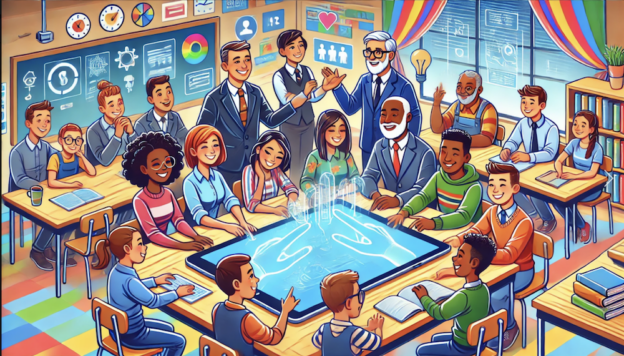
Revolutionize Your School Community Online with K12Leaders
In today’s digital age, the community of a school stretches far beyond its physical limits. Envision a platform that not only amplifies your school’s voice but also serves as the foundation for professional development and community building. Enter K12Leaders—a platform designed by educators for educators, aimed at creating dynamic and connected school environments.
Create Your Digital Community
K12Leaders offers the ideal tools to build a vibrant online hub where, teachers, administrators, and support staff can gather. This platform allows for the sharing of strategies, the privacy to collaborate and the opportunity to connect district-wide. Whether hosting a book study or working on your newest School Improvement Plan, it’s all about strengthening relationships and fostering trust. Foster a digital space that reflects your school’s ethos.
Personalized Professional Development
Professional growth doesn’t need to be disjointed, generic, or happen over email. K12Leaders provides the opportunity to customize and share professional development resources that meet your team’s specific needs. Whether it’s curated articles, engaging webinars, or collaborative discussions, K12Leaders is your one-stop destination for encouraging academic interaction and achieving educational excellence.
Enhance Connections and School Culture
Building a positive school culture requires more than a mission statement; it demands genuine connections. Through K12Leaders, educational leaders can engage with their peers, share better practices, and bring new ideas into their schools. This platform encourages collaboration across various levels and departments, helping your school culture to flourish. Hosting your teams, work groups and committees on K12Leaders allows you to focus less on organization, and more on efficiency and efficacy.
What Makes K12Leaders Unique?
- User-Friendly Design : The platform is intuitive and easy to use for all skill levels, ensuring active participation.
- Customizable Options : Adapt your community to reflect the unique identity of your school.
- Network of Educators : Connect with educators beyond your local schoolhouse, as leaders from across the nation are here. Interact to gain valuable insights and inspiration!
- Spam-free and Troll-free: You read that right. Our members are vetted and many go on to become K12Verified.
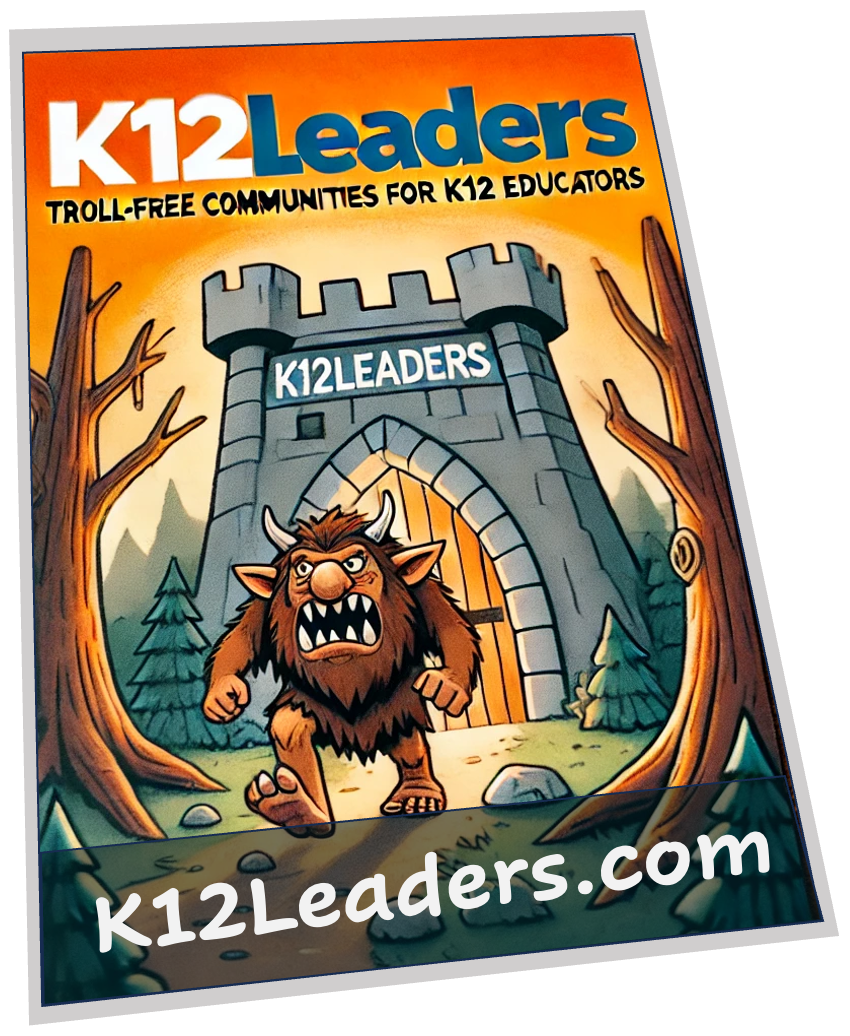
The Importance of Now
In a time when staying connected is more crucial than ever, K12Leaders provides the tools you need to lead your school towards a future where relationships, innovation, and learning thrive both online and offline. K12Leaders is more than just a platform; it’s a catalyst for change .
Join K12Leaders
Join K12Leaders today and create a stronger, smarter, and more connected school community. Let’s redefine what’s possible together.
-
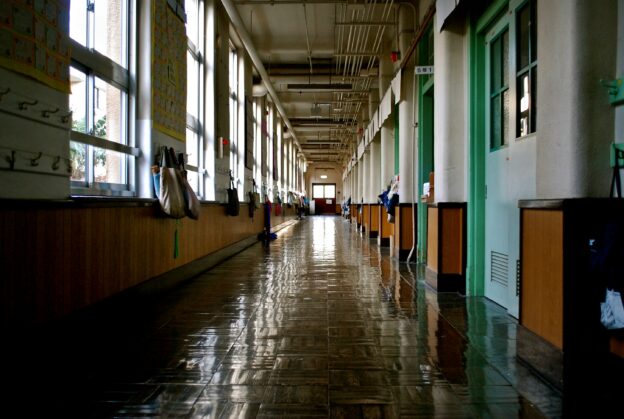
Enhancing School Safety and Attendance Management in Texas: How CAASS is the Solution
In Texas public schools, particularly in growing cities like Houston, school safety and student accountability have become critical issues. With sprawling campuses and thousands of students to manage, schools face challenges in maintaining real-time oversight of student attendance, tracking movement, and ensuring that each individual is where they need to be for optimal learning and safety. This issue is exacerbated by the increased mobility of students within schools, particularly during transitions between classes, lunch periods, and extracurricular activities.
The problem ? Administrators and staff often struggle with outdated, inefficient systems that make it hard to respond quickly to attendance gaps, truancy, and safety concerns. Traditional paper-based systems or basic digital tools are no longer enough to meet the demands of modern public schools. These outdated methods can delay real-time interventions for missing or misplaced students and leave schools vulnerable to safety risks.
This is where Access411’s CAASS (Computerized Attendance and Student Surveillance) system steps in as the ideal solution. CAASS provides Texas schools with a powerful platform that not only monitors student attendance with precision but also tracks student movement throughout the building, delivering real-time data to administrators and staff. This ability to monitor movement and gather detailed reports ensures that no student falls through the cracks.
Here’s how CAASS addresses the specific needs of Houston and Texas public schools:
- Real-Time Attendance and Accountability
CAASS allows schools to move beyond traditional attendance-taking methods by providing real-time data on where students are at any given moment. Whether it’s at the start of the day, between classes, or during off-campus activities, administrators can easily monitor attendance and intervene if a student is missing from a scheduled class. - Seamless Hallway and On-Campus Movement Tracking
With CAASS, staff can utilize mobile ScanStations to perform hall sweeps, ensuring students are in the right places during class time. These ScanStations provide a comprehensive overview of student movement and can even function outside the school building for outdoor events or activities. This feature is especially useful for large campuses, where maintaining order can be challenging. - Enhancing School Safety
Safety is a top priority, and with CAASS, schools can quickly identify and address potential safety risks. By knowing which students are in the building and where, staff can prevent unauthorized absences and be alerted to any unusual activity that could indicate a security issue. - Instant Pass Printing with Bluetooth Technology
The CAASS system is equipped with Bluetooth mobile printers, allowing staff to instantly issue student passes, reducing delays, and improving accountability during hall sweeps and other on-the-go checks. - Integration with School Information Systems
CAASS integrates seamlessly with existing school information systems, making it easy for Texas schools to adopt without overhauling their current infrastructure. This ensures a smooth transition and ongoing efficiency in operations.
As schools in Houston and across Texas continue to grow, the challenges of managing student attendance and ensuring safety will only increase. CAASS provides the innovative, reliable solution that today’s public schools need. With its real-time tracking, mobile functionality, and safety-enhancing features, CAASS empowers Texas educators to maintain control and provide a safer, more accountable learning environment for all students.
Ready to enhance your school’s safety and attendance systems? Contact Access411 today to learn more about bringing CAASS to your campus.
- Real-Time Attendance and Accountability
-

Free Pass to FETC
First time to FETC? Habitual attender? Either way, join the FETC Community on K12Leaders for a chance to win a FREE pass to FETC 2025 in Orlando, Florida!
Join your fellow FETC attendees, presenters, and exhibitors in a public forum moderated my non-other than Mr. Carl Hooker! Ask you question, share your plans, publish your sessions, and expand your network to get the most out of your time at FETC!
[wpforms id=”60741″ title=”false”]
-
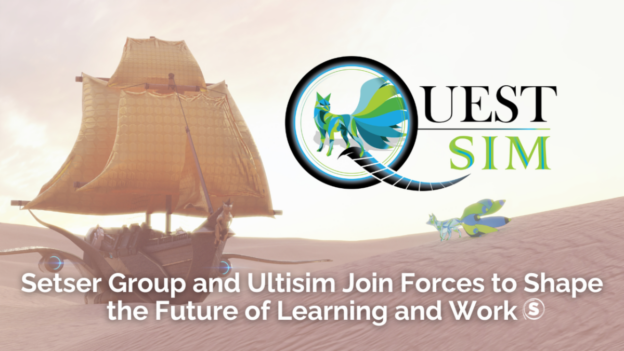
Joining Forces to Shape the Future of Learning and Work
“The future is not something to predict. The future is something to build.”
Alvin Toffler
The future of education and work isn’t just over the horizon—it’s here, demanding we reimagine how we prepare learners and the workforce for an ever-shifting landscape. This fall, we are excited to announce a groundbreaking partnership between Setser Group and Ultisim, fusing our expertise to revolutionize learning and workforce readiness. This collaboration is not just a new chapter but the continuation of a relationship between Richard Boyd and Bryan Setser, longtime collaborators and innovators in educational technology. Together, they are now bringing their shared vision to life on an unprecedented scale.
A LEGACY OF COLLABORATION
Richard Boyd and Bryan Setser’s partnership is built on a foundation of shared curiosity about a better world. Their journey together began in 2007 while Richard pioneered Lockheed Martin’s Virtual Worlds as the Chief Architect and Bryan revolutionized online education as CEO of the North Carolina Virtual Public School (NCVPS). Their combined expertise in virtual environments and educational leadership has sparked numerous successful projects over the years, each expanding the frontiers of learning and technology. Here’s Bryan appearing on Richard’s The Metaversial Podcast Minute hosted by Richard Boyd in 2023:
Bryan and Richard exploring virtual worlds. The strength of their partnership endures. Today, Richard and Bryan serve on each other’s boards—Richard lending his expertise to Setser Group, and Bryan contributing his insights to Ultisim. Their shared vision for transforming education and work is stronger than ever, and it is this shared vision that fuels their latest venture.
INTRODUCING QUESTSIM: LEARNING WITHOUT LIMITS
Ready to take the first step towards future-proofing your students’ education? Contact Bryan at Setser Group today to schedule a personalized QuestSim demonstration. Let’s work together to create learning experiences that don’t just meet the future—they define it.
This fall, Setser Group and Ultisim unveil QuestSim, a groundbreaking platform that reimagines education and the workforce for the 21st Century. QuestSim isn’t just another digital tool—it’s a portal to immersive, hands-on learning experiences that prepare both students and professionals for tomorrow’s challenges. Check out this preview:
Harnessing cutting-edge simulation technology, QuestSim creates virtual environments where learners don’t just study—they do. Whether it’s conducting a virtual science experiment, managing a simulated business, or exploring historical events firsthand, QuestSim offers experiences that traditional classrooms can’t match. And the best part? It works on existing school devices, making advanced learning accessible to all.
WHY QUESTSIM?
Innovation in Learning

QuestSim isn’t just educational technology—it’s a paradigm shift. By immersing learners in dynamic, real-world scenarios, QuestSim cultivates essential 21st-century skills. Students don’t just memorize facts; they solve complex problems, think critically, and collaborate effectively in safe, guided environments. This approach bridges the gap between classroom theory and real-world application, preparing learners for challenges we can’t yet imagine.
Workforce Readiness
The job market is evolving at breakneck speed. QuestSim evolves with it, constantly updating its simulations to reflect emerging industries and skills. From coding and data analysis to green energy management and AI ethics, QuestSim provides hands-on experience in high-demand fields. This exposure not only prepares learners for existing jobs but also equips them with the adaptability to thrive in roles that don’t yet exist.

Excellence Through Partnership

QuestSim is more than a product—it’s the culmination of Setser Group and Ultisim’s shared commitment to transformative education. By combining Setser Group’s expertise in educational strategy with Ultisim’s mastery of immersive technology, QuestSim sets a new standard for learning platforms. Our collaboration ensures that QuestSim remains at the forefront of educational innovation, continuously evolving to meet the needs of learners and industries alike.
EMPOWER YOUR STUDENTS FOR TOMORROW’S WORLD
At Setser Group, we’re committed to equipping every student with the tools they need to thrive in any future. QuestSim isn’t just about preparing students—it’s about empowering them to shape their own paths in a rapidly evolving world.
This fall, we’re offering school districts a unique opportunity to revolutionize their approach to learning. Bryan Setser is personally available to guide you through QuestSim’s capabilities, demonstrating how it can transform your educational landscape. From boosting engagement to enhancing critical thinking skills, QuestSim offers a tailored solution for your district’s specific needs.
Ready to take the first step towards future-proofing your students’ education? Contact Bryan at Setser Group today to schedule a personalized QuestSim demonstration. Let’s work together to create learning experiences that don’t just meet the future—they define it.
-
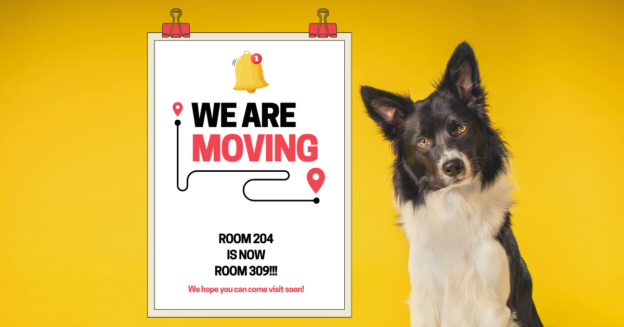
The Great Classroom Migration: A Teacher’s Guide to Relocating Over the Summer
Ah, summer: a time for relaxation, rejuvenation, and… relocating your entire classroom? That’s right, fellow educators! As the school year winds down, some of us are faced with the daunting task of moving to a new classroom. In fact, as a teacher I moved my room SEVERAL times (sans air conditioning!!), and I’m set to move again this summer! But fear not! With a sprinkle of inspiration and a dash of organization, you can turn this chore into an adventure. Here are some tips to help you survive the great classroom migration.
Hoard Boxes Like a Squirrel Preparing for Winter
Start collecting boxes early. The last thing you want is to be stuffing science experiments into your purse because you ran out of boxes on moving day. Visit your local grocery store and ask for boxes (banana boxes are my favorite), or check out recycling bins on cardboard pickup day. Remember that those big reusable shopping bags you can get at stores (like TJMaxx) can be great for moving, too! Either way, your Future Self will thank you.
Label Like You’re Writing Sub Plans
We all know the level of detail required in sub plans if we want our classroom to function in our absence. Apply that same principle to labeling your boxes and furniture. Design and print many quarter-page size signs that say what the new destination is, with a line to write on. When you fill in that line, “Mrs. Smith’s stuff” won’t cut it. Be specific: “Mrs. Smith’s Precious Sticky Notes and Beloved Staplers.” You get the idea.
Recruit an Army of Helpful Hands
Promise your students extra credit, pizza, or the secret to eternal happiness if they help you move. Okay, maybe not the last one, but getting students involved can make the process faster and more fun. The last days of school are the perfect time to invite parents in for a farewell celebration, and believe me, they will be happy to help, too! Just make sure they lift with their knees, not their backs!
Create a Treasure Map
Draw a layout of your new classroom and plan where everything will go. This will save you from playing musical chairs with your filing cabinets later. Your custodians will thank you, because they really don’t want teachers moving furniture on those shiny floors they washed (sans air conditioning).
Hold a Garage Sale
As you pack, you’ll find things you haven’t used since the overhead projector was in vogue. Take this opportunity to start anew… with less. If you don’t need it, sell it or donate it. Your classroom hoard could be another teacher’s treasure. Consider online listings on Facebook Marketplace, or post on an education-site like K12Leaders!!!
The Essentials Bag
Pack a small bag with the essentials you’ll need on the first day in your new room: markers, attendance list, chocolate (for emergencies), and your favorite “I’m the teacher, that’s why” mug. Take that bag home for the summer so you don’t have to worry about someone else moving it for you. These precautions will prevent panic when you can’t find the box labeled “Mrs. Smith’s Important Stuff.”
Celebrate the Memories
Take a moment to reminisce about the good times in your old classroom. Maybe have a farewell ceremony where you and your students share your favorite memories. Don’t leave behind items for “the new teacher” without knowing they are wanted. Be sure to leave the room in better condition than you found it, it’s a great way to get closure before moving on.
Embrace the Chaos
Things will go wrong. You’ll lose a box. Your new room will be smaller than you thought. Embrace it. Laugh about it. After all, overcoming challenges is what teachers do best.
So there you have it, the ultimate guide to moving classrooms. Remember, it’s not just about relocating materials; it’s about creating a new space for learning and making new memories. Good luck to all of us, and may the odds be ever in our favor!
-

New Pathway added to expand and deepen your understanding of AI
Welcome to AI’s Role in the Workplace: Real-World Applications and Frameworks for Success, a micro-course designed to expand your horizons and deepen your understanding of artificial intelligence. This micro-course is crafted for professionals eager to harness AI’s potential to augment human capabilities, ethics, and creativity. As we explore evidence-based approaches and innovative solutions, you will gain the skills to use AI responsibly and innovatively, ensuring it amplifies, not replaces, human potential. Join us to shape the future of AI, creating better outcomes for all. You will find the micro-course in your K12Leaders Professional Pathways.
-
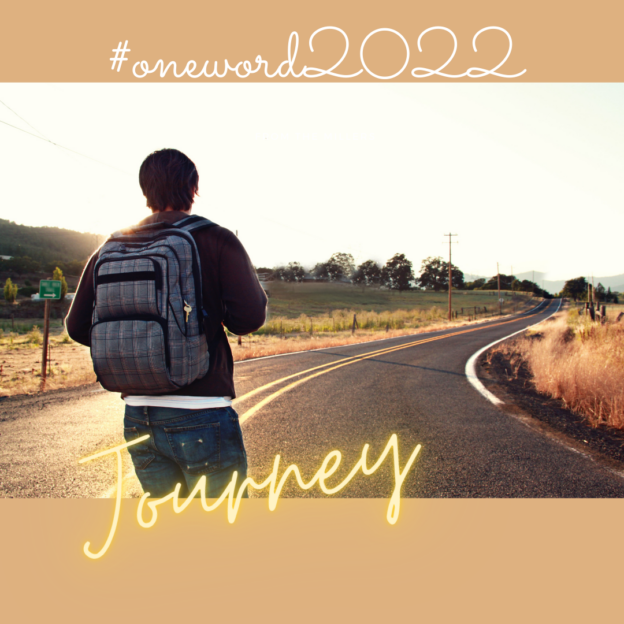
The Impact #oneword Can Have
Over the past few years, I’ve participated in the #oneword movement. Each year since 2020, I have chosen a word after reflecting on the past year and my year ahead. As the year passes, I refer to my word and check in about how it resonates with me and relates to events in my life. For me, it’s a better guide than a New Year resolution and continues reverberating years later. I intentionally chose each #oneword to ensure they connect from year to year, which means they can be an even more powerful guide to me.
Here are my #onewords in yearly order:
2019: Transition
2020: Belonging
2021: Advocate
2022: Journey
2023: Bittersweet
2024: Bridge
I will share an example to show how powerful these words can be as a guide.
Since the early 2000s, I have passionately supported educators and education leaders with training, coaching, and mentoring. My work included attending and presenting at local, regional, and international conferences and providing these services to local Kuwaiti private schools through a consultancy I established in 2012. I attended and presented at conferences such as ISTE, ASCD, TESOL International, TESOL Arabia, INACOL, and BettMENA on various topics. It was something that was a part of my soul. I continued to do it even after I retired from full-time work as an administrator in 2019. It was a way to stay connected with people during the pandemic and stay busy in my retirement. I never thought I’d set this work aside. Until…
In Spring 2022, my son and daughter-in-law announced they were expecting a baby that Fall. A week or so later, my daughter and son-in-law announced they were expecting twins a few weeks before them. I was elated! I’d waited years to become a Nana, and now I would be a Nana three times! How awesome is that? Then reality set in. Both couples lived in different states on the Eastern coast of the U.S. at the time. I consulted with them and decided to travel from Kuwait to be with my daughter since she was due before my daughter-in-law. I also knew she would need help with the twins. When my daughter-in-law’s mother left to return to Kuwait in November, I arranged to spend time helping her and my son.
Fast forward to September 10, 2023, and the unexpected early birth of the twins by C-section. I immediately bought an air ticket to travel at the earliest available date. The babies were premature at 28 weeks, so they were hospitalized in the NICU for a month. My daughter was recovering from pre-eclampsia and the surgery, so she stayed in the hospital for a week. That gave me time to finish what I needed to do in Kuwait, pack, and head West. So began a year-long balance of life in the U.S. and Kuwait. All thoughts about my professional life were put on the back burner as I put systems in place to support my daughter and son-in-law as they navigated parenthood with two preemies. As I told them when I arrived, my goal was to support, not take over. They were going through a significant transition, and I was staying in their home. Decisions about what, how, and when to do things would come from them. Only when I was asked for suggestions would I make any. On the rare occasion when I felt strongly about something, I asked if I could give advice based on my experience. They appreciated that my role was supportive so they could set up a new life situation that worked for them. As a result, my relationship with them deepened.
However, I had to cancel 2023 conference appearances at ISTE, EDIT Summit, TESOL, and a local TESOL conference that I had committed to doing. As the year went on, I struggled every time I received a call for proposals from an organization I belonged to until I finally unsubscribed from most of them. In 2022 and 2023, I was focused on self-care (I’m not as young as I was when I had my kids, so taking care of babies with lots of needs at all times of day and night took a toll on me after a couple of months) and focused on my family. I was honest with my children and their spouses about making sure my health stayed a priority so I could keep helping them. That meant staying in the U.S. for a couple of months, then returning to Kuwait, where my husband awaited my short visits. Then, flying back to the U.S. to help out again. I did that five times in the space of ten months. I am privileged because I retired and have the time and financial means to do that.
It might surprise you that even after all this time and my devotion to my children and grandchildren, I struggled with giving up my passion for training and supporting teachers to have more time to focus on my family, especially my grandchildren. I also wanted to be available for my mother (she’s 99, reasonably self-sufficient, but needs me now and then). There was no time to work on presentations or submissions, and I had to withdraw from the conferences I’d already committed to. I have organized events and conferences, which creates more work for the organizers if someone changes their mind. That impacted me emotionally.
Now, back to my #oneword series.
In 2019, I transitioned from full-time work as a very involved administrator who worked long hours to retirement. Transition was a perfect word for that year as I navigated my life without a daily schedule.
In 2020, my #oneword was belonging. I focused on freelance consulting and presenting wherever and whenever I could. It helped my transition to retirement and supported my sense of belonging.
In 2021, advocate (verb and noun) was my #oneword. The world was still in the midst of the pandemic, and politics was dealing heavy blows to DEIJB initiatives. I grew up believing in people and their humanity. It was time for me to speak out about issues and listen to understand why, after many years of effort by people and organizations to bring equity and social justice to every individual, we were failing.
In 2022, my #oneword was journey. All of life is a journey, and I began to feel the need to view life in transition and my search for belonging as a path on my journey.
Last year, my #oneword was bittersweet. I felt the bittersweetness of leaving my freelance work (the bitter) and looking for other paths, like writing children’s books and spending time with my family (the sweetness), which was connected with belonging. I allowed me to be available when my family needed me.
This year, I reflected on the past few years and looked forward. I realized that the year would still be a bit bitter with some sweetness and that I could be the bridge if I fully accepted the changes in my life. I also consider myself a bridge between people and cultures; people who’ve met me have mentioned the same. The main character of my first picture book is Aziza. She is a bi-racial Arab American living in Kuwait and navigating a world where difference makes it difficult for her to be included by her peers. Although she is bilingual (Arabic/English), she has a detectable accent when she speaks Arabic, and her classmates notice it. She is also much shorter than her peers, which makes her look younger than her age. I hope Aziza’s story will create a bridge between the perceptions of differences of her classmates and create a sense of belonging and community through their shared life experiences.
As you can see, I remain true to my passion: supporting children’s sense of belonging. Only this time, through storytelling, teachers can read to their students and discuss topics like inclusion and diversity. I’m also planning to write books for older children steeped in the history and culture of the Arabian Gulf region to broaden the perspective of readers from around the world.
My #oneword continues to guide my life. It’s only March, and I already see how “bridge” impacts my thinking about a future without conferences and consulting filled with writing and imagining. It also pushes me to reach out virtually to the many educators I will no longer see in person. I want to keep those connections alive and am making a concerted effort.
Posted by: Ilene Winokur, EdD
Dr. Ilene Winokur has lived in Kuwait since 1984 and is a professional development specialist supporting teachers globally, including refugee teachers. Ilene has been active in learning innovation for over 25 years and is passionate about narratives related to belonging. Before retiring in 2019, she was a teacher and administrator at the primary and pre-college levels. Her work has focused on supporting multilingual learners and increasing their success in English-based curricula. As a teacher, she earned her teaching certification in ESL to increase her toolbox of strategies to ensure her students felt included, valued, and seen. As a school leader, Ilene mentored her team members about techniques such as scaffolding and tiered questioning that support language acquisition. Ilene advocates for instilling a sense of belonging in students, which is the subject of her books Journey to Belonging: Pathways to Well-Being and Finding Your Pathway to Belonging in Education.